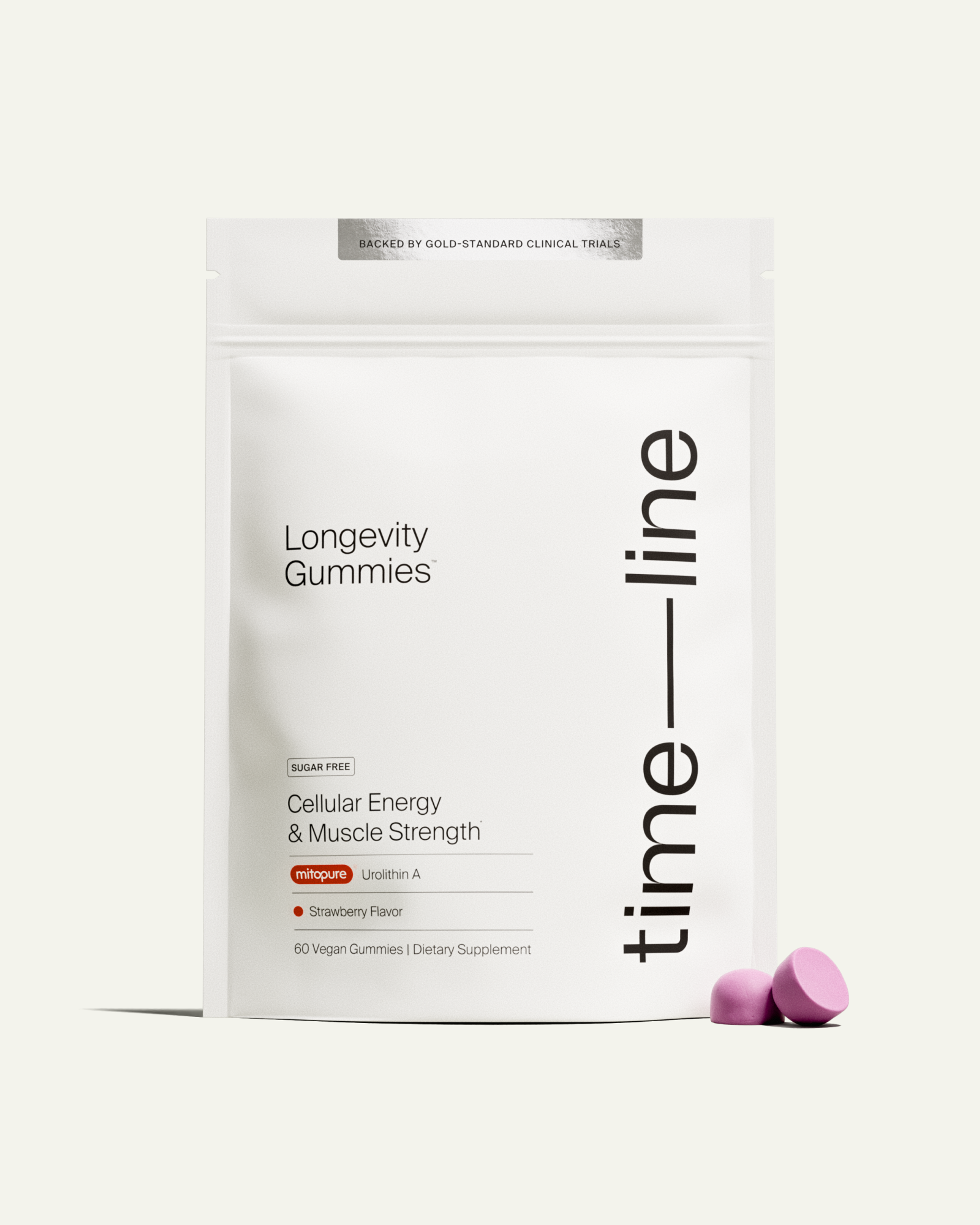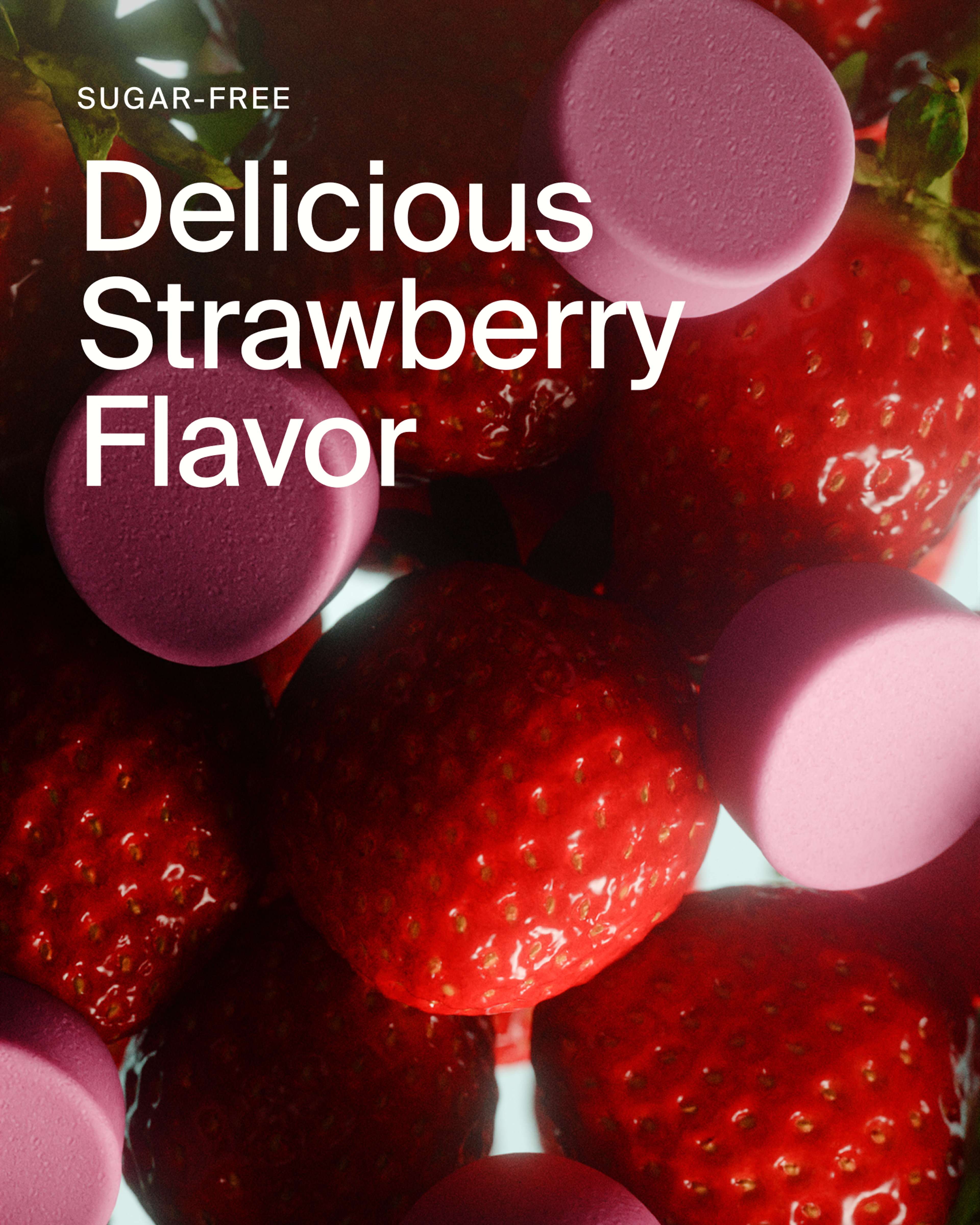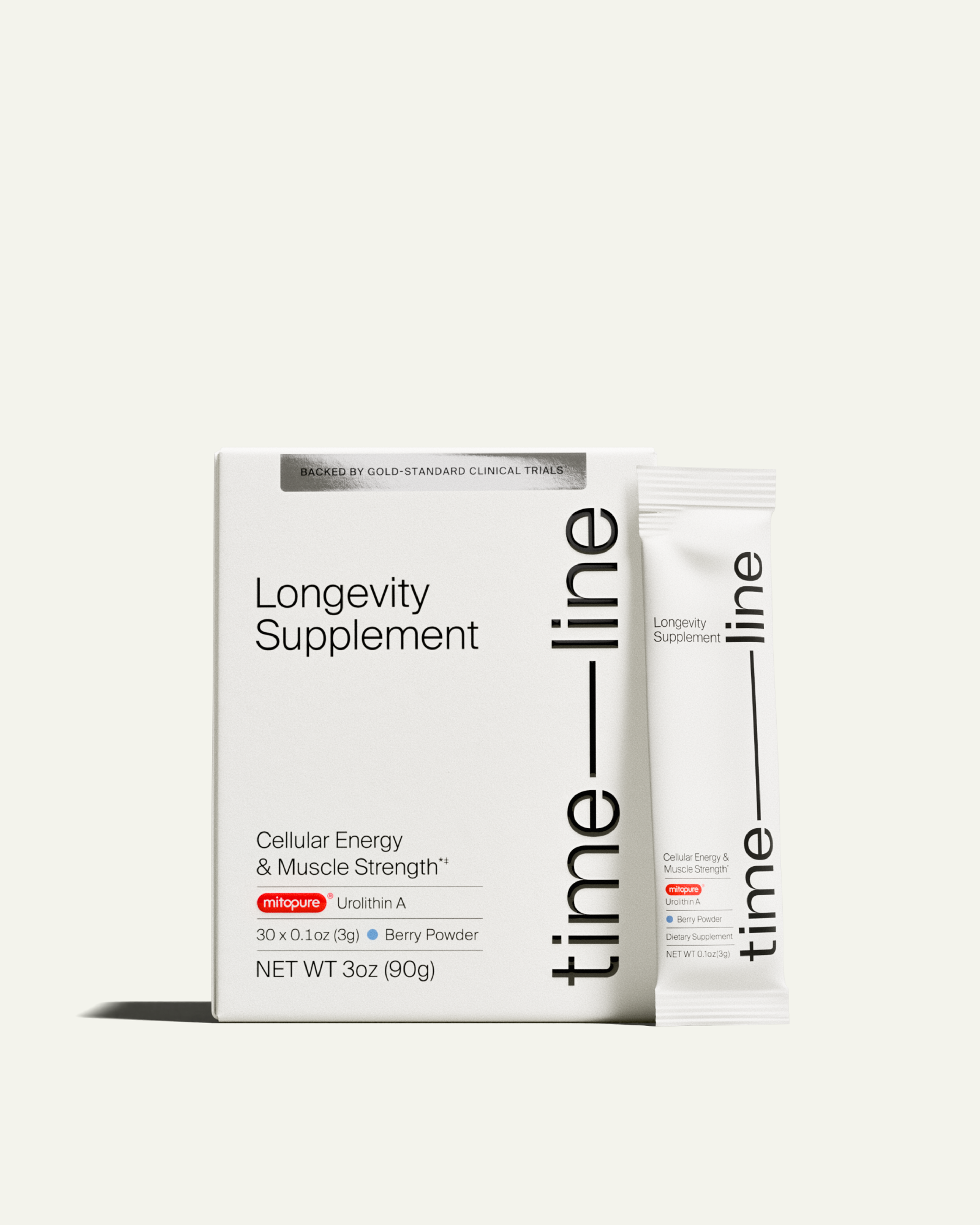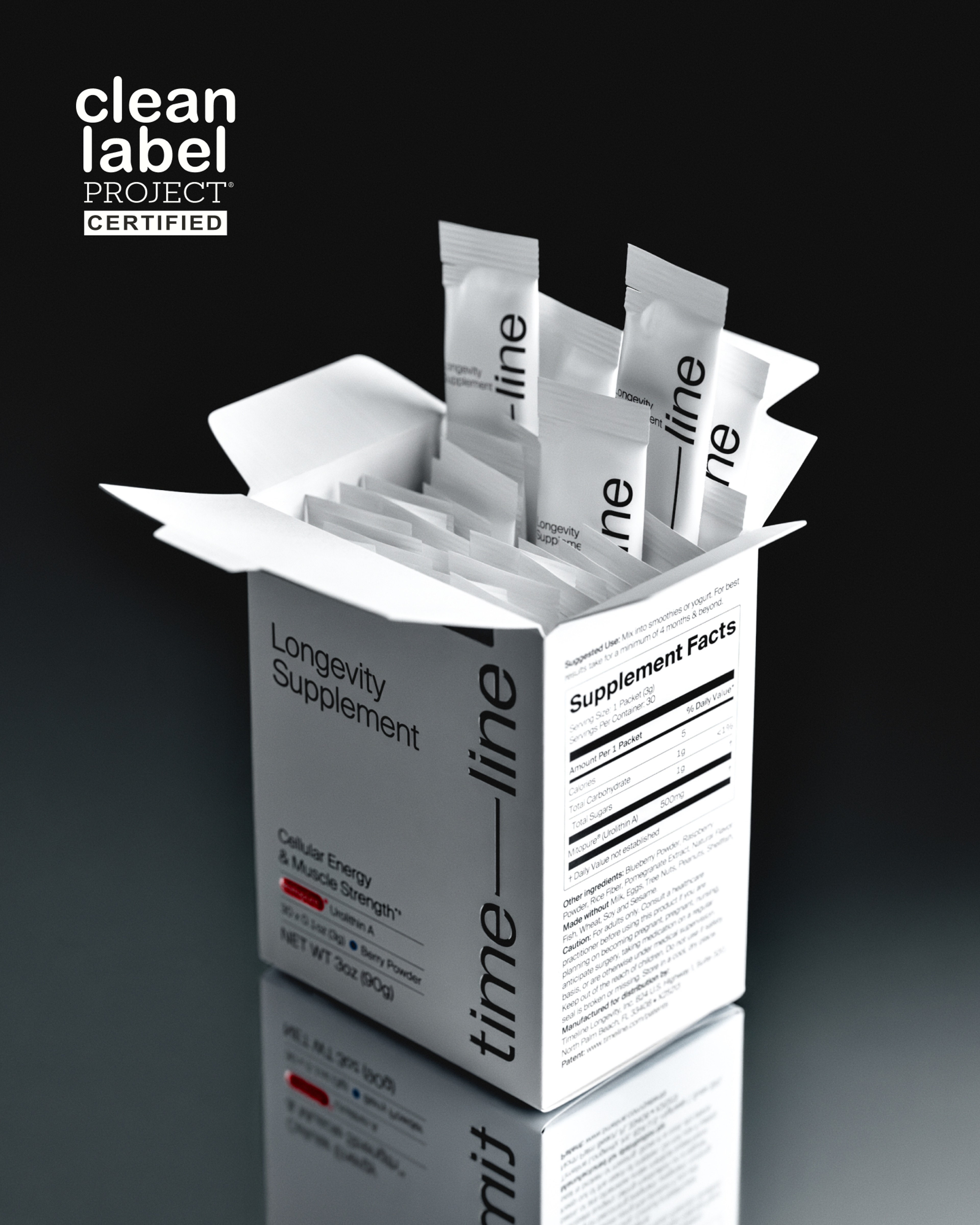What is the difference between Urolithin A and NAD+
Learn the difference between Urolithin A (UA) and NAD+ when it comes to boosting your energy and supporting the health of your mitochondria.
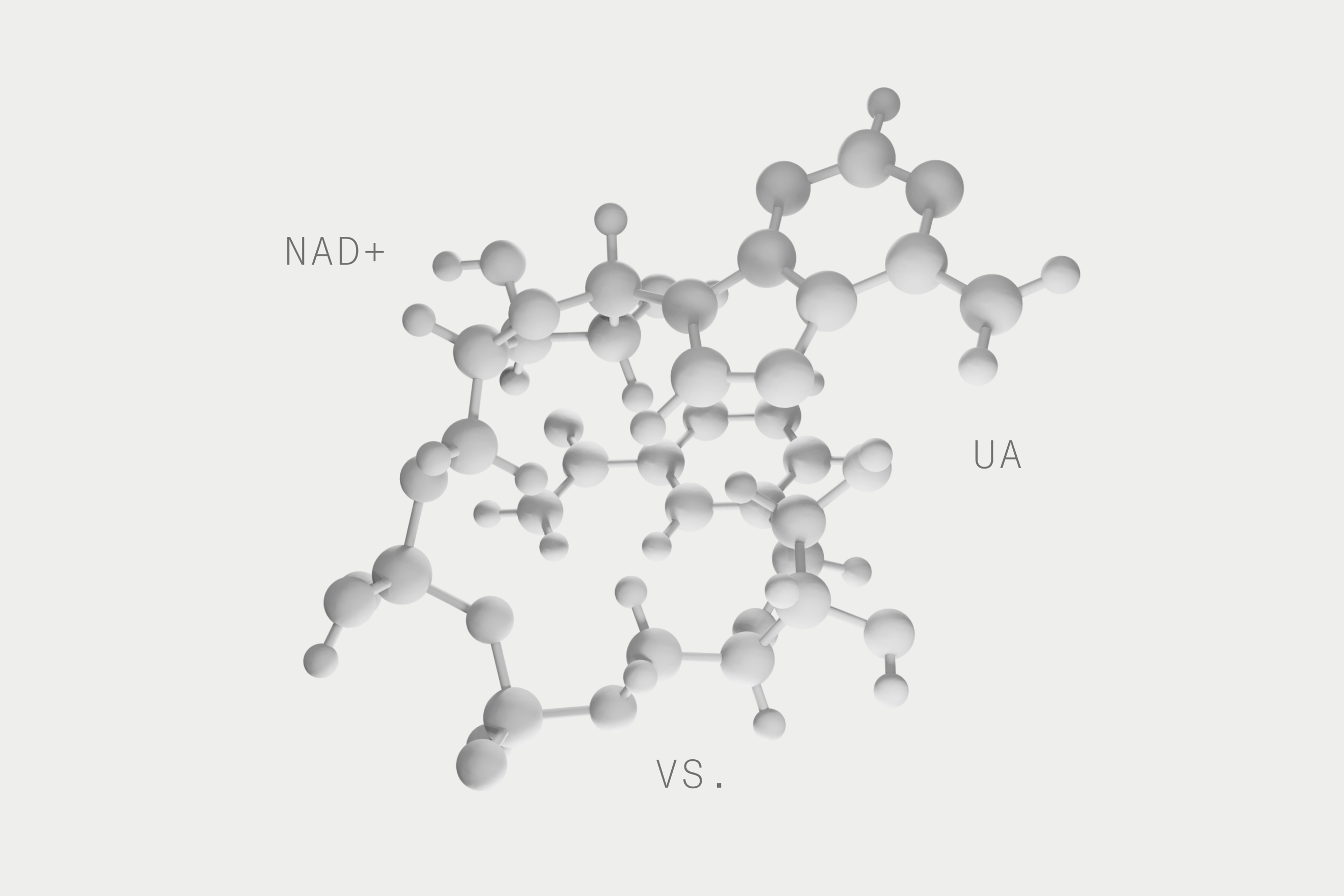
Urolithin A (UA) and NAD+ are two powerful nutrients that play a significant role in cellular energy production and cellular aging.
Urolithin A produces a mitochondrial recharge, allowing older, damaged mitochondria to be recycled and regenerated into newer, healthier ones. Nicotinamide adenine dinucleotide, or NAD for short, is a cofactor needed for our mitochondria to produce energy from the food that we eat.
Both of these nutrients are essential for creating energy and supporting the health of the mitochondria, but their function within the cells is very different. If you are curious about the difference between Urolithin A and NAD+, this article is for you.
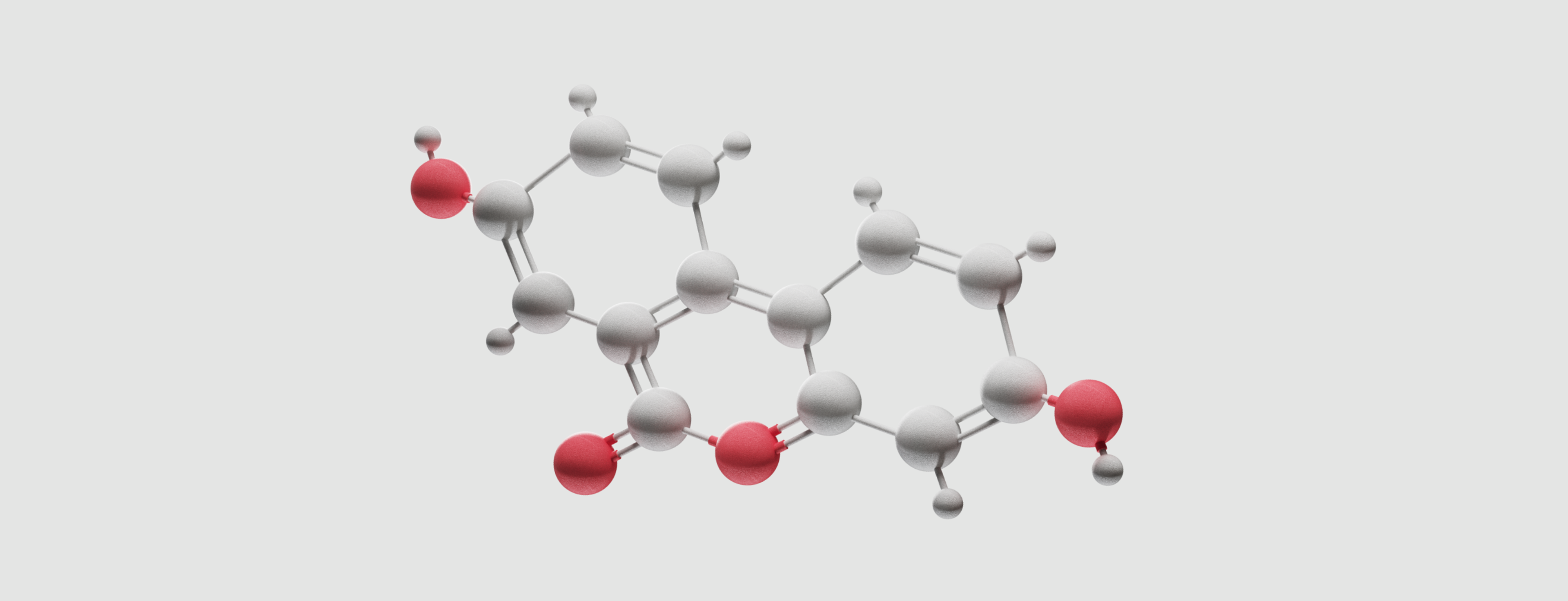
Urolithin A molecule structure
What is Urolithin A?
Urolithin A is a postbiotic that plays an important role in cellular health. Research uncovered that this incredible molecule has a unique benefit in supporting our mitochondria. It does so by optimizing a process called mitophagy, by which the mitochondria are recycled and revitalized for better performance.
With an ever-growing interest in discovering novel ways to address the aging population’s health, Urolithin A has become a topic of interest for longevity researchers across the globe. The mitochondrial theory of aging suggests that mitochondrial decline is a key contributor to aging and the development of chronic disease. Optimizing how our mitochondria perform could be the key to slowing down the aging process.
Urolithin A is a powerful postbiotic
Urolithin A is not directly available to us through the food we eat. Instead, our microbiome converts polyphenolic compounds found in pomegranates, berries, and walnuts into Urolithin A. Unfortunately, research has demonstrated that only about ⅓ of the population has the ability to convert these precursor molecules into UA[1]. Even those who can produce it may not be able to make enough to experience health benefits.
For most of the population, the only way to ensure that you are getting an effective dose of Urolithin A is to take a supplement such as Mitopure.
5 Main Health Benefit Research Areas of Urolithin A
Urolithin A has been studied for several health benefits related to longevity and chronic disease. Let’s break down what the research says:

Muscular health
Our muscles are one of the most energy-dependent tissues in our body. So it should come as no surprise that muscle cells are densely populated with mitochondria. When it comes to muscular health, we often think of athletes looking to enhance their performance. However, maintaining muscular health has to be a top priority for the aging and sedentary population.
Supplementation with Urolithin A has been clinically proven to improve muscle function in older adults[2]. Additionally, research in mice suggests that supplementation with Urolithin A may improve muscle function by increasing NAD+ levels and ATP output. This supports blood vessel function for better blood supply to the muscles that need it.[3]

Neurodegenerative disease
Several pre-clinical studies show that Urolithin A may be protective against diseases of the brain and nervous system. This may make it an important tool in the treatment of conditions such as Alzheimer's disease, Parkinson's disease, and multiples sclerosis.[4]More research is needed to determine if these promising results can translate to humans.
The Buck Institute for Research on Aging received 3.4 million dollars from the National Institutes of Health to investigate how Urolithin A could help prevent or even reverse Alzheimer's disease, which implies just how important this molecule may be in treating these devastating illnesses.

Cardiovascular health
Your heart is a muscle that works 24 hours a day, without a break, and it takes a lot of mitochondria to produce a steady stream of energy to keep it beating. Therefore, healthy and efficient mitochondria are a must for a healthy heart. It is not surprising that pre-clinical trials suggest that taking Urolithin A may help protect the heart from damage and improve cardiovascular risk factors.[5]

Metabolic disease
The worldwide rates of obesity continue to climb. And with it, the risk of metabolic disorders, including high blood sugar, insulin resistance, and type 2 diabetes. Finding safe and effective treatment for metabolic diseases could help save the lives of many individuals and reduce the healthcare costs associated with treating these conditions.
Interestingly, several pre-clinical trials show promise for using Urolithin A to help protect against metabolic dysfunction. It may help improve insulin sensitivity and blood glucose levels and could be a powerful tool in the treatment of diabetes.[6]

Increased Lifespan
While studies around increased longevity have only been conducted in animal trials thus far, the results are exciting. Pre-cliniccal trials have found that Urolithin A can significantly extend lifespan in rodents and worms.[7] While it’s a great leap to assume this will translate to humans, it provides researchers with much needed data points to help study safe and effective treatments to help humans live longer, healthy lives.
What is NAD+
NAD+ is made in the body from the B3 family of vitamins that includes niacin, nicotinamide, and nicotinamide riboside.[8] It acts as a cofactor in a series of metabolic reactions that drive cellular energy production inside the mitochondria. You can think of NAD as a shuttle that carries electrons from molecule to molecule. This shuttling action creates an energetic gradient used to generate ATP - the cell's energy source.
Recent research has recognized that NAD+ is a key player in other important chemical reactions, including those related to the aging process. NAD levels decline as we age, and this decline is associated with many age-related chronic conditions. The connection appears to be between the dwindling levels of NAD in the cells and dysfunction of the mitochondria.[9]
Trails are underway to see if boosting NAD levels could be used as an anti-aging treatment or therapy for age-related chronic conditions.[10] NAD boosters are either supplemented orally with NAD precursors or through IV infusions. The oral NAD precursors most commonly studied are[11]:
- Nicotinamide riboside
- Nicotinamide mononucleotide
- Inhibitors of enzymes that consume NAD.
Urolithin A VS NAD+
Urolithin A and NAD+ both play vital roles in the production of cellular energy and the aging process. However, the way they do so is very different. If you are considering a supplement, understanding this key difference can help you decide which one might be better for you.
The mitochondria are the bedrock of energy production, so it is no wonder that the body evolved a process to keep their health in check. This process, called mitophagy, allows them to improve their performance by recycling and repairing themselves. While NAD+ is critical in energy metabolism, only Urolithin A directly addresses mitochondrial aging by optimizing mitophagy.
Researchers continue to uncover Urolithin A’s role in our health. For example, a recent trial looked at Uroltihin A supplementation in mice and determined that it was able to significantly increase the levels of NAD+.[12] Animal trials are important in helping to shape the future of clinical trials, and the hope is that we will see similar results in humans.
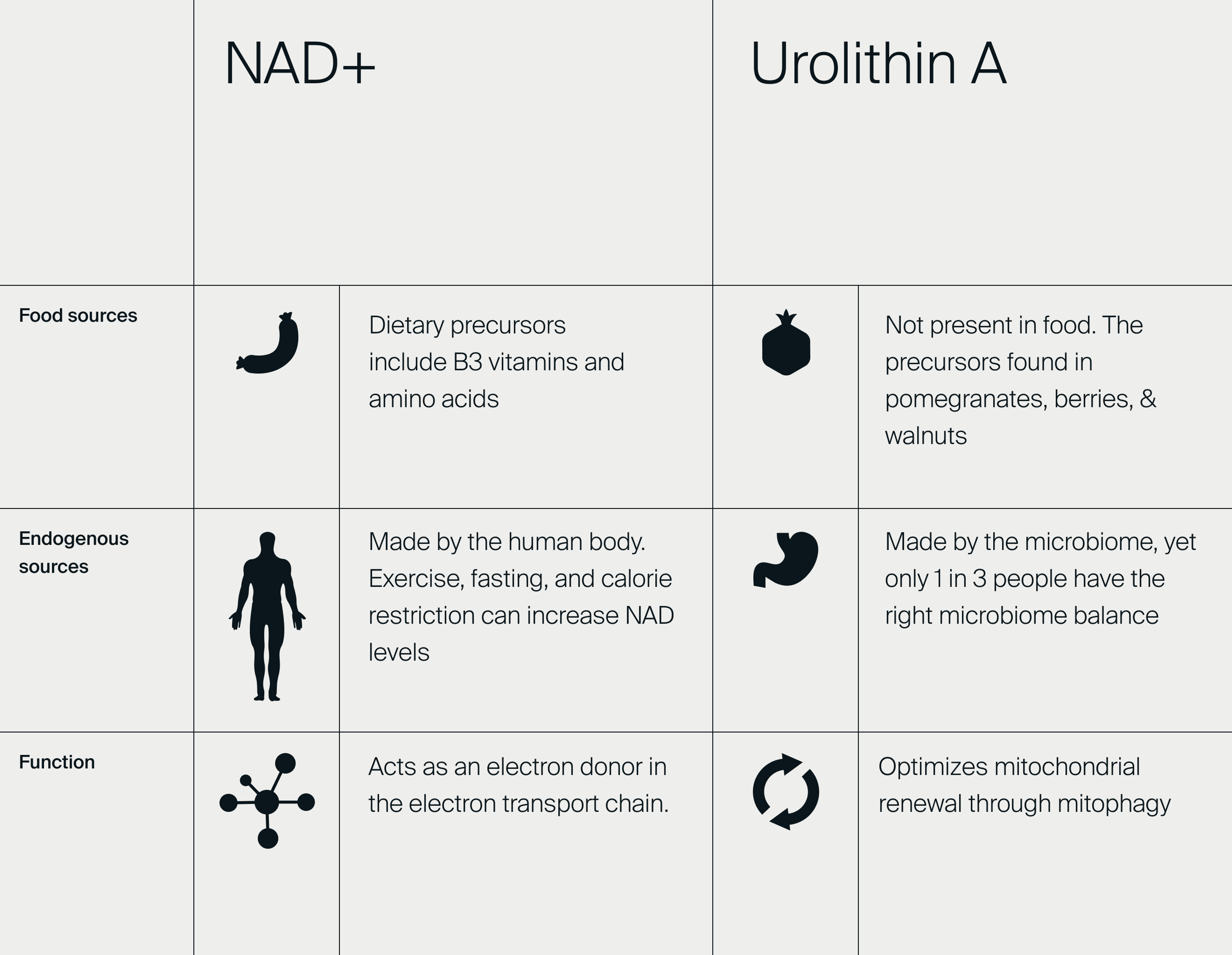
Comparison of the endogenous sources, food sources and the function of Urolithin A and NAD+
Is Urolithin A better than NAD+?
There are no head-to-head studies comparing the effectiveness of Urolithin A vs. NAD+. However, once you understand the important role mitophagy plays in cellular health, you’ll see how it might make more sense to support the renewal process before supporting the energy-making process. All the cofactors in the world will not make defective mitochondria more efficient, so using a supplement like Mitopure as the foundation for mitochondrial health seems like a smart first step. When you layer in the fact that most of us cannot produce adequate amounts of Urolithin A, the case for supplementation seems even clearer.
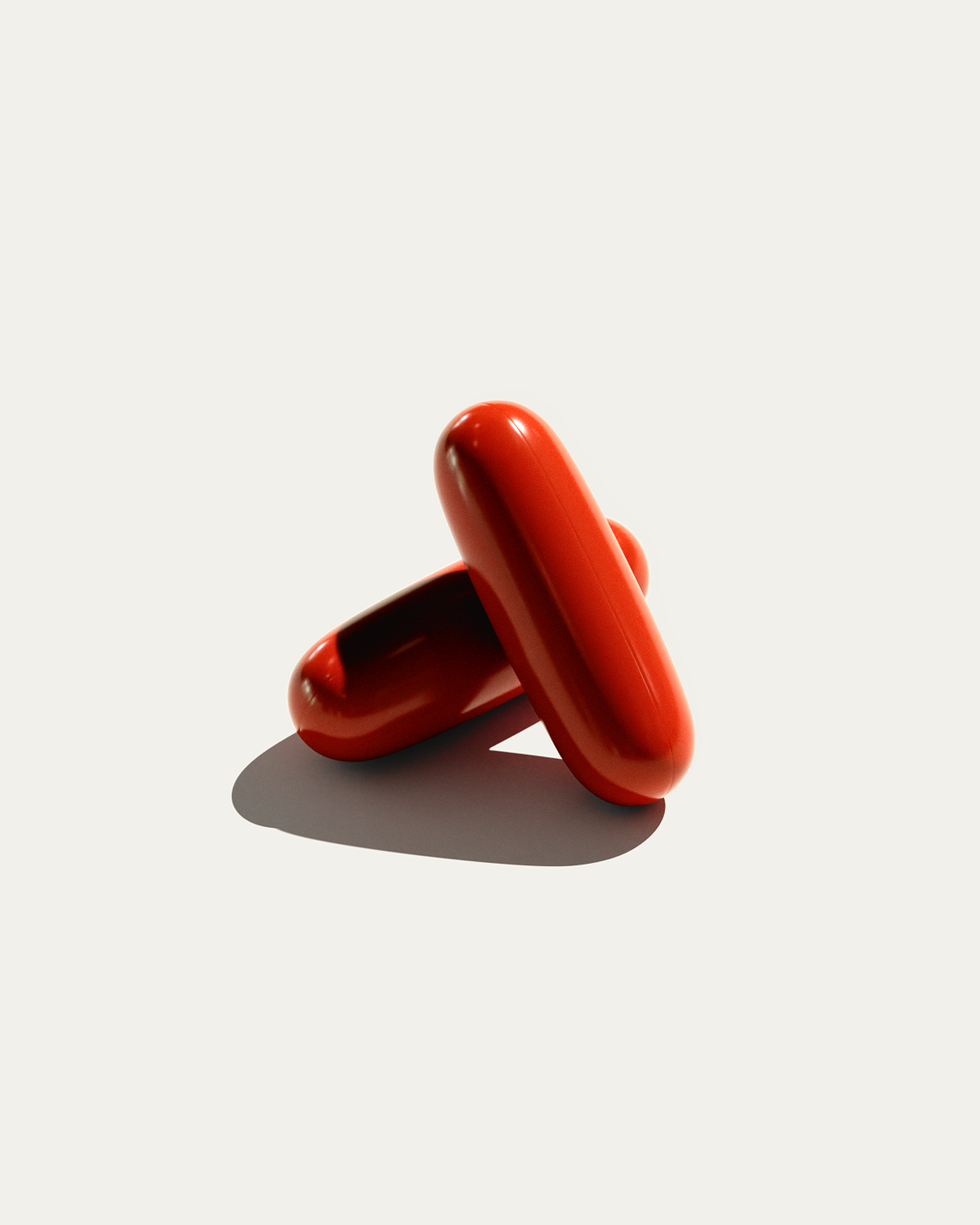
Mitopure Softgels
4.5 · 3752 reviews
The simplest form of Mitopure
References
- ↑
Singh A, D’Amico D, Andreux PA, et al. Direct supplementation with Urolithin A overcomes limitations of dietary exposure and gut microbiome variability in healthy adults to achieve consistent levels across the population. Eur J Clin Nutr. Published online June 11, 2021:1-12. doi:10.1038/s41430-021-00950-1
- ↑
Liu S, D’Amico D, Shankland E, et al. Effect of Urolithin A Supplementation on Muscle Endurance and Mitochondrial Health in Older Adults: A Randomized Clinical Trial. JAMA Netw Open. 2022;5(1):e2144279. doi:10.1001/jamanetworkopen.2021.44279
- ↑
Ghosh N, Das A, Biswas N, et al. Urolithin A augments angiogenic pathways in skeletal muscle by bolstering NAD+ and SIRT1. Sci Rep. 2020;10(1):20184. doi:10.1038/s41598-020-76564-7
- ↑
D’Amico D, Andreux PA, Valdés P, Singh A, Rinsch C, Auwerx J. Impact of the Natural Compound Urolithin A on Health, Disease, and Aging. Trends in Molecular Medicine. 2021;27(7):687-699. doi:10.1016/j.molmed.2021.04.009
- ↑
D’Amico D, Andreux PA, Valdés P, Singh A, Rinsch C, Auwerx J. Impact of the Natural Compound Urolithin A on Health, Disease, and Aging. Trends in Molecular Medicine. 2021;27(7):687-699. doi:10.1016/j.molmed.2021.04.009
- ↑
D’Amico D, Andreux PA, Valdés P, Singh A, Rinsch C, Auwerx J. Impact of the Natural Compound Urolithin A on Health, Disease, and Aging. Trends in Molecular Medicine. 2021;27(7):687-699. doi:10.1016/j.molmed.2021.04.009
Raimundo AF, Ferreira S, Tomás-Barberán FA, Santos CN, Menezes R. Urolithins: Diet-Derived Bioavailable Metabolites to Tackle Diabetes. Nutrients. 2021;13(12):4285. doi:10.3390/nu13124285
- ↑
D’Amico D, Andreux PA, Valdés P, Singh A, Rinsch C, Auwerx J. Impact of the Natural Compound Urolithin A on Health, Disease, and Aging. Trends in Molecular Medicine. 2021;27(7):687-699. doi:10.1016/j.molmed.2021.04.009
- ↑
NAD+ Precursors. About NAD. Accessed April 15, 2022. https://www.aboutnad.com/nad-precursors-1
- ↑
Imai S ichiro, Guarente L. NAD+ and sirtuins in aging and disease. Trends in Cell Biology. 2014;24(8):464-471. doi:10.1016/j.tcb.2014.04.002
- ↑
Imai S ichiro, Guarente L. NAD+ and sirtuins in aging and disease. Trends in Cell Biology. 2014;24(8):464-471. doi:10.1016/j.tcb.2014.04.002
- ↑
Kang BE, Choi JY, Stein S, Ryu D. Implications of NAD+ boosters in translational medicine. European Journal of Clinical Investigation. 2020;50(10):e13334. doi:10.1111/eci.13334
- ↑
Ghosh N, Das A, Biswas N, et al. Urolithin A augments angiogenic pathways in skeletal muscle by bolstering NAD+ and SIRT1. Sci Rep. 2020;10(1):20184. doi:10.1038/s41598-020-76564-7

·
Nutrition·
Studies·
